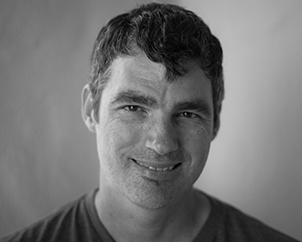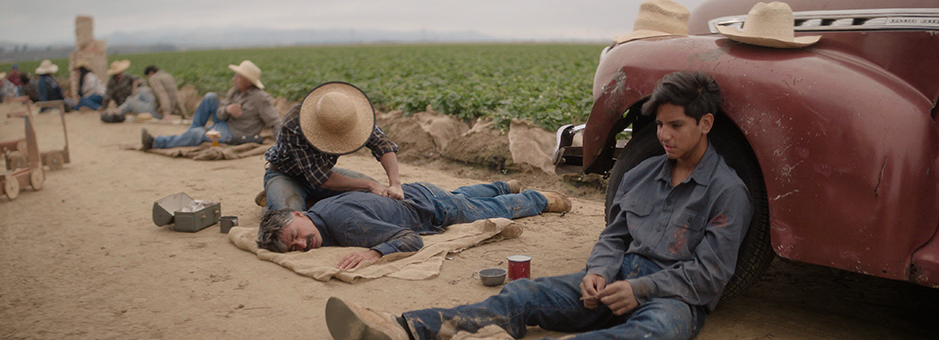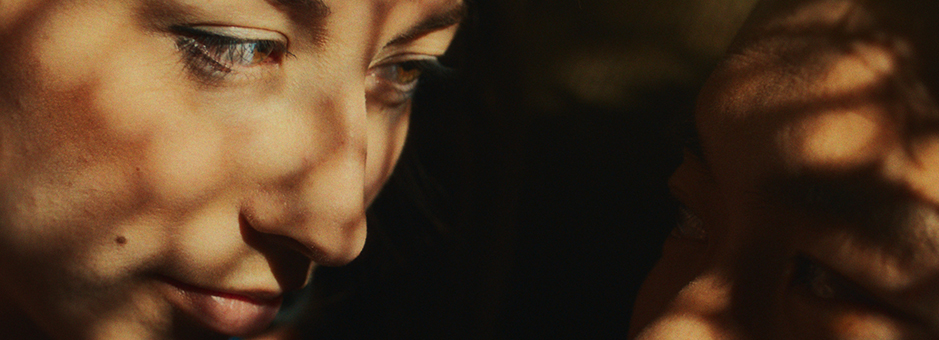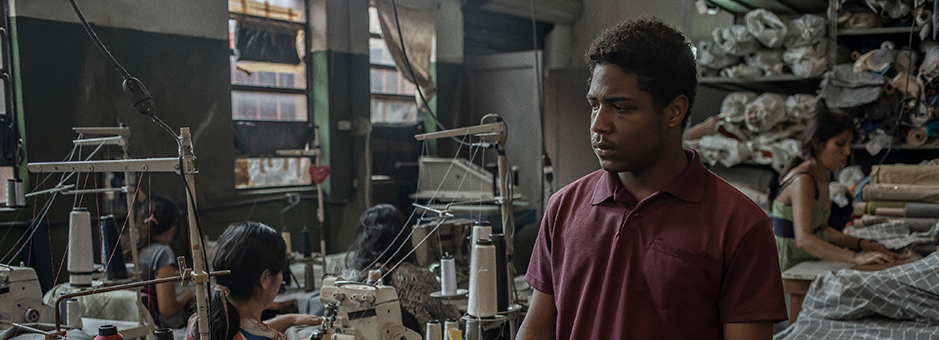Meet The Colourist
Chris Martin
Colourist, Mission Film & Design, San Francisco
Chris has been a colourist for the last 20+ years, based out of the San Francisco Bay Area. He has balanced his commercial and music video work with his love for narrative and documentary projects. His credits include Fruitvale Station (2013), Songs My Brother Taught Me (2015), and 7 Prisoners (2021).
Along the way, Chris has collaborated withfilmmakers Ryan Coogler, Rachel Morrison, Chloé Zao, Alexandre Moratto and Francis Ford Coppola.
Since 2016, Chris has been part of the team at Mission Film and Design (MFD).
Tell us about your journey to becoming a successful colourist?
I was a History major in college when I took my first photography class. I was immediately hooked, going into the university dark room at night and not realising it was morning until I came out. Later, I wound up as a PA at a post facility thinking I wanted to be an editor. They had a telecine and colour grading system and I was drawn to how the craft combined the elements of the dark room with working from film, while being this bridge between production and post-production.
Can you tell us more about Mission Film and Design?
Mission Film and Design (MFD) is a boutique shop right along the water near the historic Ferry Building in San Francisco. Our focus is colour grading, so we collaborate with a wide range of creative entities who are looking for a grading partner. Being in a relatively small market, what I love most is that I get to work on so many different types of projects. I can go from working with agency creatives one day, to grading a Sundance bound film the next.
How long have you been grading on Baselight?
I have been on Baselight now for five years. It was easy to fall in love with all the grading tools. Everything is so well thought out and designed. Base Grade is a great example. It is the first primary grading tool I have used which allows for such natural control over the zone system. We were also drawn to FilmLight’s colour science and colour management. As a boutique, we do not have the luxury of having a colour scientist on staff. FilmLight has filled that role for us.
We definitely had our eye on more complex workflows too, such as HDR and Dolby Vision, when we added Baselight. The first time I graded for Dolby Vision was for the Netflix film 7 Prisoners, directed by Alexandre Moratto. That project was a big first for us and working on Baselight provided both the creative and technical backbone I needed.
How has the role of a colourist changed over the years?
I think a colourist sees an image through the eyes of the tools they have at their disposal. So when we get a tool that elevates our ability to work with the image in a new and unique way, I feel like our craft is constantly evolving. Thinking about when I first used Baselight, all the textural tools were a brave new world for me. Now I really see an image beyond exposure, contrast, hue and saturation – I see the more nuanced elements that construct an image because I have the tools to do something about it.
Can you tell us more about your work on the independent film, Owl?
Owl is very much a ‘labour of love’ film with deep Bay Area roots. The director, Julian Pham and DoP, Andrés Gallegos worked on the film for five years, filming on and off through the pandemic. They were close to locking by the time I came on as colourist. I was really drawn to the strong visual composition of the film, which was shot on ARRI ALEXA and framed for 1.33. There are a lot of scenes where dialogue takes a back seat to composition and movement and I could see the grade was really going to play a strong role in shaping the film.
You started the film on Baselight 5.3?
We were still in Baselight 5.3 for the look development and first pass. We developed a look that did not so much mimic 16mm Kodachrome as it did honour the spirit of the stock. Working in ACES, we came up with a recipe that blended varying degrees of three of Baselight’s Core Looks within the Look operator - Vivid, Complement and Light. We came up with the right amount of weight, split tone and hue crosstalk in the blues and reds that we felt gave a modern twist to Kodachrome. After this, I worked with the flare operator in Base Grade. The right amount of lift was found that acted like a slight flashing of the film. This allowed me to work in the layers above and lean into lowering the overall exposure and finding the darker mood the film has while preserving a consistent quality to the shadows across the film that had a nice analogue roll to them.
I really like how Baselight allows me to customise a grading layer. Once we were happy with the developed look, I created a single consolidated layer that blended the Core Looks in the proper order and then added the Base Grade flare lift to the bottom of the layer’s operators. I then just had one strip with the entire look development that I could grade through. I also made a category for it so we could easily fine tune the look as we went. We used the grain tool in Baselight to dial in the right amount of grain to evoke 16mm.
As luck would have it, Baselight 6.0 was released about the same time we finished the first pass. I had a hunch that some of the new textural tools such as Bokeh and Flare would work great on this project.
In the film, Jean, the protagonist, has returned home to look after her ailing father. She is forced to confront both the skeletons in her past and the realisation of what she is about to sacrifice. There’s a lot of non-verbal quiet moments in the film where Jean is in her own world lost in her thoughts. We found using the Bokeh tool with customised mattes really enhanced the idea that Jean was disconnected from her world. It is the first time I have had a tool within a grading system that felt so much closer to being the real thing optically rather than just a blurring of pixels. It felt so much more natural so I could really lean into it.
For scenes that felt a little harsh in the shadows, we found some nice recipes with the Flare tool to create a softer atmosphere. We didn’t so much use it for the stronger chromatic effects as much as for this atmospheric feel. I really like how the Flare parameters are built so that I can use certain elements of a flare quality rather than having a flare effect that is a little more absolute.
What was your collaboration like with the director and DoP?
For look development, Andrés (the DoP) and Julian (the director) shared some stills of some workshopping Andrés had done. The idea was that this work inhabited the mood of what the grade should feel like, rather than “this is the look.” That gave me the space to explore without wandering off the reservation. They helped create a strong personable and creative atmosphere for me to be expressive in.
Once we were in Baselight 6.0, Andrés really leaned into the Bokeh tool for scenes when the protagonist was at their most existential moments.Were there any particularly challenging scenes?
The opening scene shows one of the film’s characters on top of her van, surveying the landscape with the San Francisco Bay in the foreground. We wanted a dense cool tone with accented warm light from the fading sun, while in reality the sun had already dipped below the horizon. To blend in some warmth, I found an exposure and temperature we liked in Base Grade and created a soft slightly opaque brush stroke using the paint matte. This allowed me to brush in some of this warmth and exposure to the horizon and clouds.
Does Baselight 6.0 change the way you work?
Tools such as curves and lift/gamma/gain are time tested and we can do so much with these that being offered a new tool that is both functional while elevating the grade isn’t something that happens every day. For me, X Grade is both of these things. It’s like combining all the grading response of Base Grade into well-constructed mattes which live underneath the hood and that I don’t have to worry about. I use a tablet when I grade and have found the UI operation of X Grade to be easy and intuitive – using the pen with X Grade’s interface is like choosing a colour with a painter’s palette.
As a colourist I am always seeing an image through the eyes of the tools that I have at my disposal. I’m finding exploring how flares can be used in subtle nuanced ways, how X Grade can be used to, for example, bring out just enough green in pine tree foliage in the middle of winter. And I have also rediscovered the Curve Grade operator, with its new interface and colour space workflow.What’s your career highlight to date?
I would have to say grading Fruitvale Station (2013) and Songs My Brother Taught Me (2015). From an experiential standpoint, both films offered many of the elements I was looking for when I chose to get involved in filmmaking.
Both films are so courageous and have such a strong resonance. I love the artistic expression of them and enjoyed the experience of colouring with Ryan Coogler and DoP Rachel Morrison (for Fruitvale Station) and Chloé Zao and DoP Joshua James Richards (for Songs My Brother Taught Me). But, what really made both experiences so special was that for both Ryan and Chloé, how a film is made is every bit as important as the film itself. These were four wonderful people to spend so much time in a dark theatre with – making the experience all the more meaningful.
Ryan Coogler and Chloé Zao have both gone on to create such wonderful things, but there’s something really exciting and pure about working with someone on their first feature film.Any advice for aspiring young colourists?
My advice is to go out and take pictures and/or shoot digital film. Not only are you giving yourself something to colour, but you will better understand the perspective of the director and DoP. As a colourist, we are never creating from a blank canvas and we shouldn’t take for granted what has gone into making the images we grade.
Also, look for young filmmakers to collaborate with; you will grow together.Some of my favorite filmmakers I have worked with are ramping up for new films.
I’ve also been enjoying working with Chromogen and discovering all the ways to harness its power. I have been using some of the tools for scene-to-scene grading. I am also finding good uses for Sector Squash for unifying skin tone hues and Highlight Bleach and Neutral Tint for very functional scene grading purposes.
Join In
If you want to participate in our MTC programme, we'd love to hear from you. Contact:
Alexa Maza
e: [email protected]

“Being offered a new tool that is both functional while elevating the grade isn’t something that happens every day.
For me, X Grade is both of these things.”
Details
Colourist: Chris Martin
Role: Colourist, Mission Film & Design
Web: Mission Film & Design








